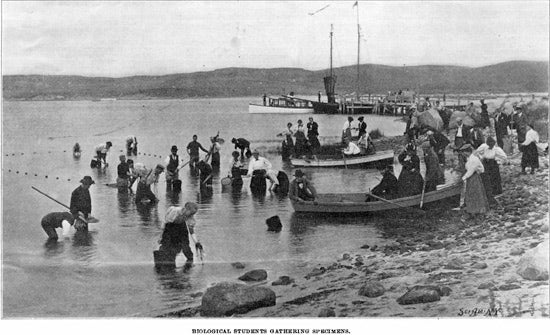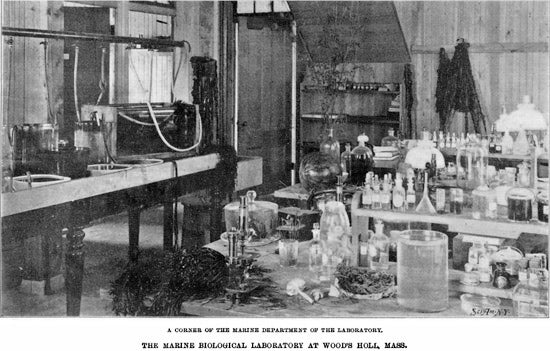This article was published in Scientific American’s former blog network and reflects the views of the author, not necessarily those of Scientific American
These coeds may be spending some time down at the beach, but as students of the Marine Biological Laboratory at Wood's Holl, Mass., it’s for work rather than play.

On supporting science journalism
If you're enjoying this article, consider supporting our award-winning journalism by subscribing. By purchasing a subscription you are helping to ensure the future of impactful stories about the discoveries and ideas shaping our world today.
The laboratory, featured in the July 4, 1903, Scientific American Supplement, was founded on the belief of naturalist Louis Agassiz: “nature and not books should be studied.” The institution officially opened in 1888 on the New England coast. The site was chosen for the purity of its seawater and its proximity to the Gulf Stream, whose currents brought in a variety of plants and animals to be studied from the ocean. There were also several freshwater ponds in the area where specimens could be easily attained.

In its 16-year existence since this article had been published, the laboratory claimed some important discoveries in the field of marine biology. “One of the most notable was that of Prof. Loeb, when he found that by treating the unfertilized eggs of sea urchins with certain solutions of salt, they could be developed into normal larvae. His success in this experiment really created a new era in biology.” Other notable experiments had to do with cell lineage, physiological morphology, and insect grafting.
The article notes that students energetically searched the shores and waters for specimens using small seines, dip nets, and shovels, and that the women students “do not hesitate to search the beaches and rocks for their prey with the men.” However, from the photo it looks like propriety still required the ladies to wade in the water while wearing ankle-length skirts.